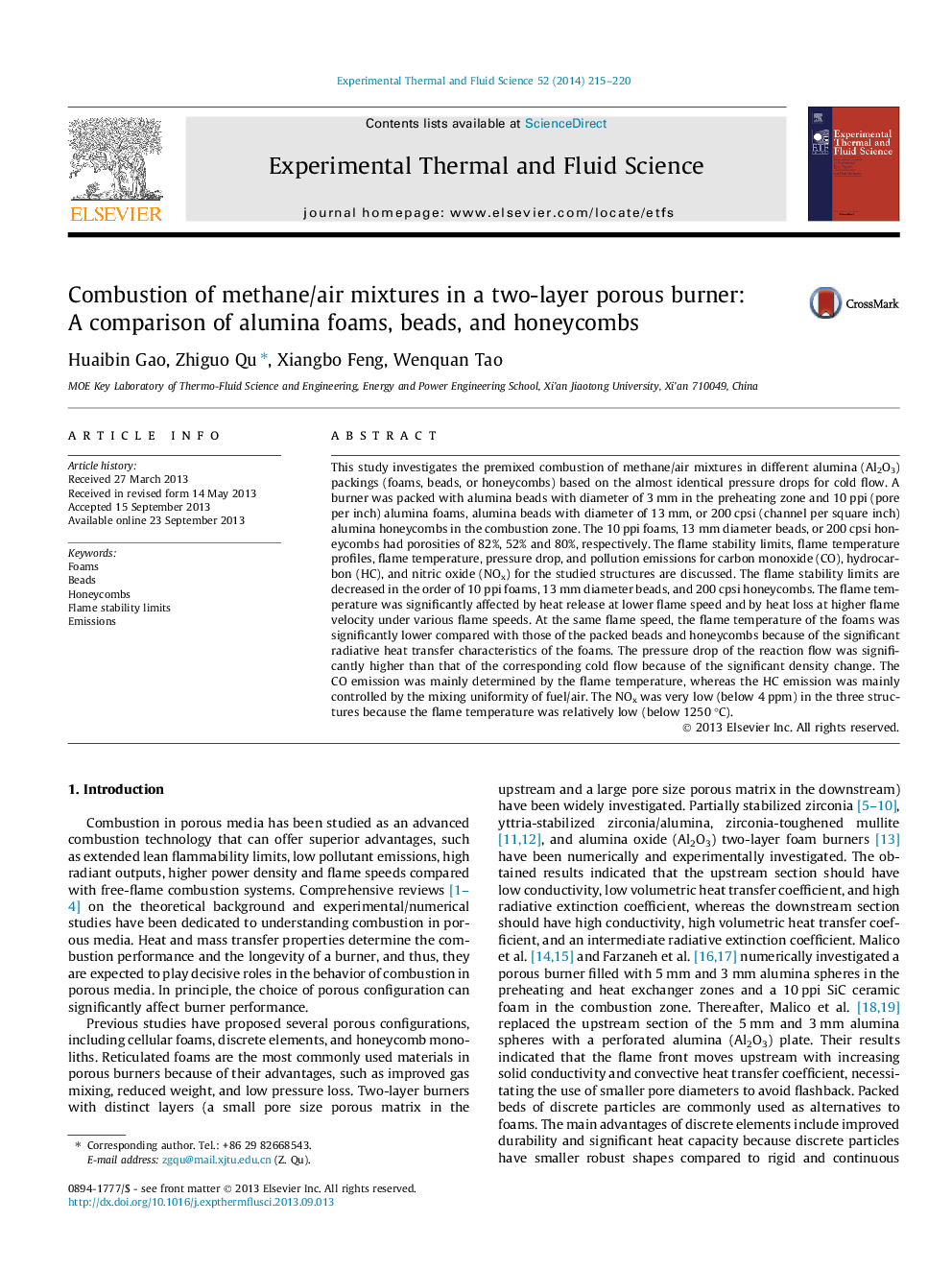| کد مقاله | کد نشریه | سال انتشار | مقاله انگلیسی | نسخه تمام متن |
|---|---|---|---|---|
| 651377 | 1457424 | 2014 | 6 صفحه PDF | دانلود رایگان |
• The flame temperature was significantly affected by heat input at lower flame speed.
• The flame temperature was affected by heat loss at higher flame velocity.
• The flame temperature of foams was lower than that of packed beads and honeycombs.
• The CO emission was mainly determined by the flame temperature.
• The HC emission was mainly controlled by the mixing uniformity of fuel/air.
This study investigates the premixed combustion of methane/air mixtures in different alumina (Al2O3) packings (foams, beads, or honeycombs) based on the almost identical pressure drops for cold flow. A burner was packed with alumina beads with diameter of 3 mm in the preheating zone and 10 ppi (pore per inch) alumina foams, alumina beads with diameter of 13 mm, or 200 cpsi (channel per square inch) alumina honeycombs in the combustion zone. The 10 ppi foams, 13 mm diameter beads, or 200 cpsi honeycombs had porosities of 82%, 52% and 80%, respectively. The flame stability limits, flame temperature profiles, flame temperature, pressure drop, and pollution emissions for carbon monoxide (CO), hydrocarbon (HC), and nitric oxide (NOx) for the studied structures are discussed. The flame stability limits are decreased in the order of 10 ppi foams, 13 mm diameter beads, and 200 cpsi honeycombs. The flame temperature was significantly affected by heat release at lower flame speed and by heat loss at higher flame velocity under various flame speeds. At the same flame speed, the flame temperature of the foams was significantly lower compared with those of the packed beads and honeycombs because of the significant radiative heat transfer characteristics of the foams. The pressure drop of the reaction flow was significantly higher than that of the corresponding cold flow because of the significant density change. The CO emission was mainly determined by the flame temperature, whereas the HC emission was mainly controlled by the mixing uniformity of fuel/air. The NOx was very low (below 4 ppm) in the three structures because the flame temperature was relatively low (below 1250 °C).
Journal: Experimental Thermal and Fluid Science - Volume 52, January 2014, Pages 215–220
